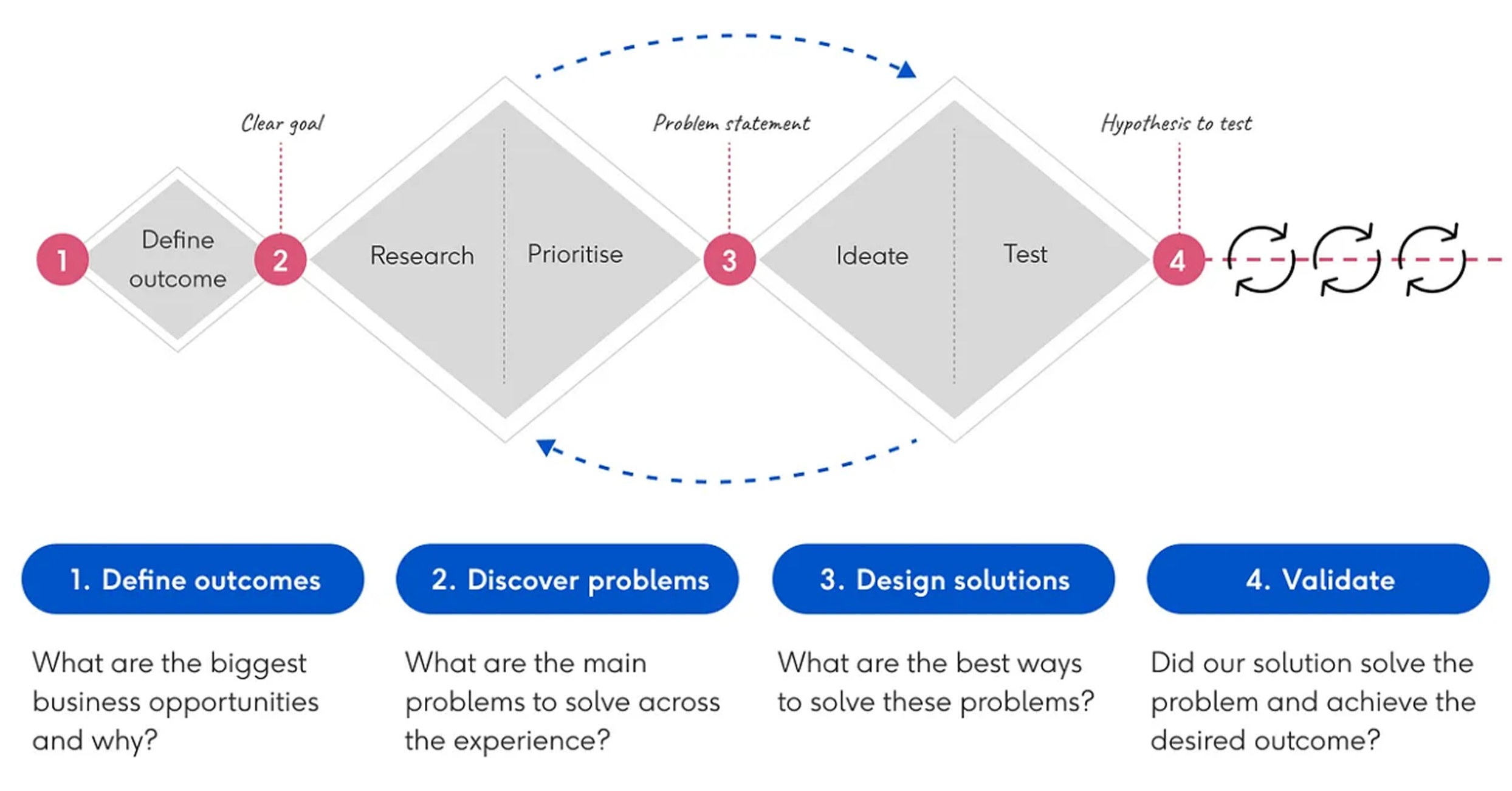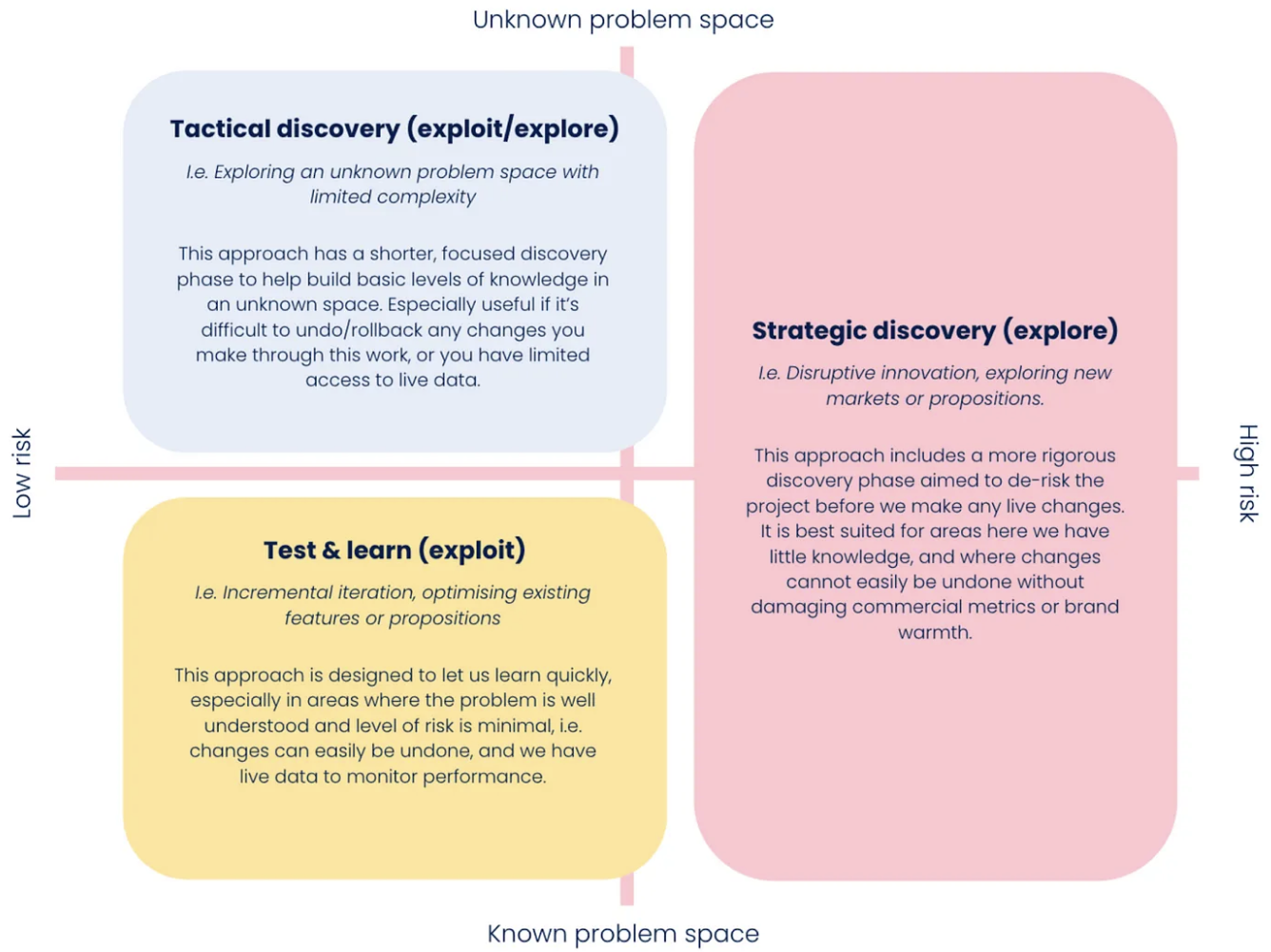I just wanted someone to say, “here’s the process, now do it”. But design said, “lol, nah”.

Moonpig’s Double Diamond process
At first, I stuck to our company’s Double Diamond framework (pictured above). But not every project fits neatly into a few diamonds, and so the diamonds exploded (I guess technically not possible since diamonds are the hardest substance on earth, but you get it).
Suddenly, every project was a maze. Should I user test this? Conduct a JTBD interview? Cry into Figma?
It was time to put the ‘how’ on the back burner and start asking ‘why’.

That matrix became my friend. But eventually, I noticed something else creeping in: logic was killing the vibe. It was time to bring a little chaos back.
Nowadays, when someone asks about my design process, I laugh a little and say, “it depends.”
Because it does. And that’s the fun part.